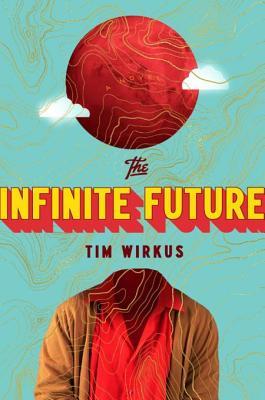
The Infinite Future
A Novel
کتاب های مرتبط
- اطلاعات
- نقد و بررسی
- دیدگاه کاربران
نقد و بررسی

October 16, 2017
Wirkus’s second novel (after City of Brick and Shadow) features an obscure science fiction writer whose stories chronicling the exploits of a space captain inspire an aspiring novelist, a Brazilian librarian, and a feminist historian to seek out the author. The action begins when Salt Lake City lawyer Danny Laszlo, one of Wirkus’s former BYU classmates, gives Wirkus a two-part manuscript. The first part of that manuscript is Danny’s account of how, while in São Paulo, he is introduced by librarian Sérgio Antunes to Eduard Salgado-MacKenzie’s stories about 23rd-century spaceship Capt. Irena Sertôrian. Like Sérgio, Danny is soon enthralled by Salgado-MacKenzie’s fiction. Joining forces with fellow enthusiast, historian Harriet Kimball, they track down the pseudonymous Salgado-MacKenzie at a remote Idaho hideaway. The second part of Danny’s manuscript is part of Salgado-MacKenzie’s unfinished last work, The Infinite Future, described in a book proposal as offering unparalleled majesty and insight. Themes of enlightenment and transgression, authority and dissent, and intellect and obsession pervade the many narratives within narratives. Wirkus can be inventive or derivative, a skilled storyteller who introduces more elements than he can connect, posing more questions than any earthly being could answer.

October 15, 2017
A struggling American writer, a Brazilian librarian, and a Mormon historian come together in a dubious mission to unearth a long-lost science-fiction masterpiece. Wirkus (City of Brick and Shadow, 2014) delved into the lives of Mormon missionaries in his debut novel and here makes a science fictional play at The Book of Mormon with a lightly comical meditation on the search for meaning in literature. It begins in a very meta fashion as "Tim Wirkus" meets Danny Laszlo, an old Brigham Young University creative-writing classmate, who presses upon the author his translation of a story by an obscure Brazilian science-fiction writer. Sad-sack Danny picks up the narration, relating how he ended up in Sao Paolo on a deceitful writing scholarship from the Coalition of Aggrieved Christians, who want him to write a book about Mormon missionaries in Brazil. But a more intriguing mystery presents itself when Danny's library liaison, Sergio Antunes, gives him several stories by Eduard Salgado-MacKenzie, a long-forgotten sci-fi novelist whose most famous work was to be titled The Infinite Future. They find this description, written in his own hand: "Strictly speaking, THE INFINITE FUTURE is not a novel. It is, instead, a prose-poem epic that discerns in the imagined empires of the future the germ of humanity's eventual henosis--its sublime and terrible union with the infinite future. It is, in other words, a prophetic text on a par with the Holy Bible or the I Ching." (Spoiler alert: it is not.) Next we get a prolonged road trip during which Danny and Sergio connect with Dr. Harriet Kimball, a disgruntled Mormon historian, to track down the mysterious author in the wilds of Idaho. The revelation that follows is a surprise by itself, but then Wirkus offers more than 150 pages of The Infinite Future, a pulpy yet literary nugget that reads like a cross between Flash Gordon and The Seventh Seal. An experimental, deeply meta novel about the search for meaning and the disappointments of reality.
COPYRIGHT(2017) Kirkus Reviews, ALL RIGHTS RESERVED.

Starred review from November 1, 2017
Wirkus' (City of Brick and Shadow, 2014) latest novel is stupendously inventive and rewarding. In a narrative approach similar to that of Mark Danielewski's House of Leaves (2000) or Michael Chabon's Moonglow (2016), it begins with a found text, a manuscript that has been handed to an aspiring writer, Danny Laszlo. In a long, detailed introduction, he explains how he received a writing grant and went to Sao Paulo, where he met a librarian, Sergio Antunes, who introduced him to the work of an elusive science-fiction writer, Eduard Salgado-MacKenzie. In a Vonnegutesque shaggy-dog story, Laszlo joins forces with Antunes and a Mormon historian, Harriet Kimball, to search for Salgado-MacKenzie and his lost novel, The Infinite Future. The second half of Wirkus' tale is the lost novel itself, a sci-fi epic which echoes Battlestar Galactica and the fiction of Ursula K. Le Guin in equal measure. Wirkus' complex novel has a Russian-doll structure, with stories within stories, yet despite all the layers and the fact that it is, essentially, two novels set side by side, it is somehow never confusing or messy. Especially well suited for fans of Jonathan Lethem and Ron Currie, this work announces Wirkus as one of the most exciting novelists of his generation.(Reprinted with permission of Booklist, copyright 2017, American Library Association.)

























دیدگاه کاربران